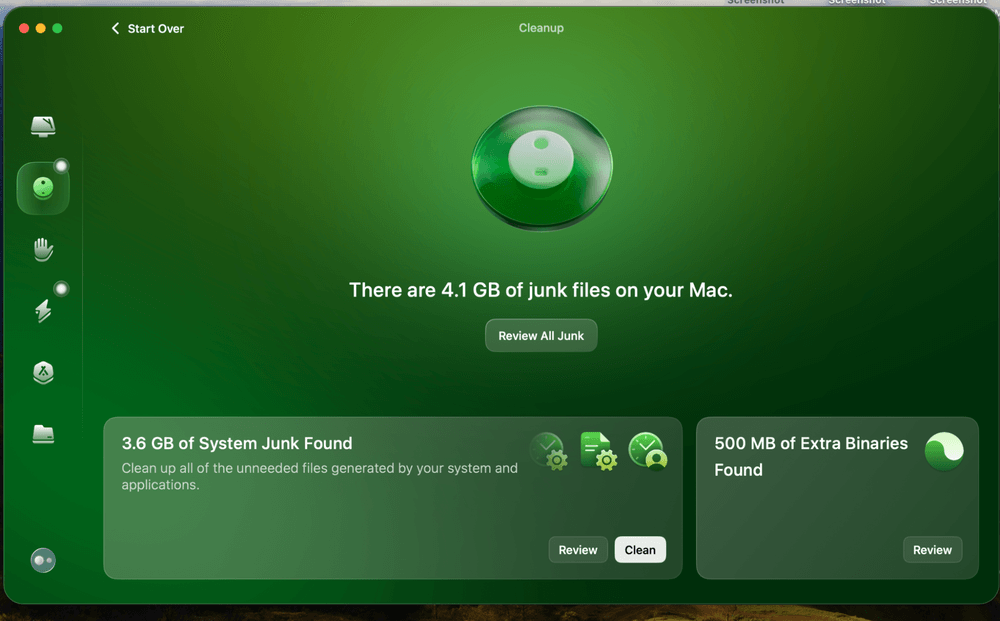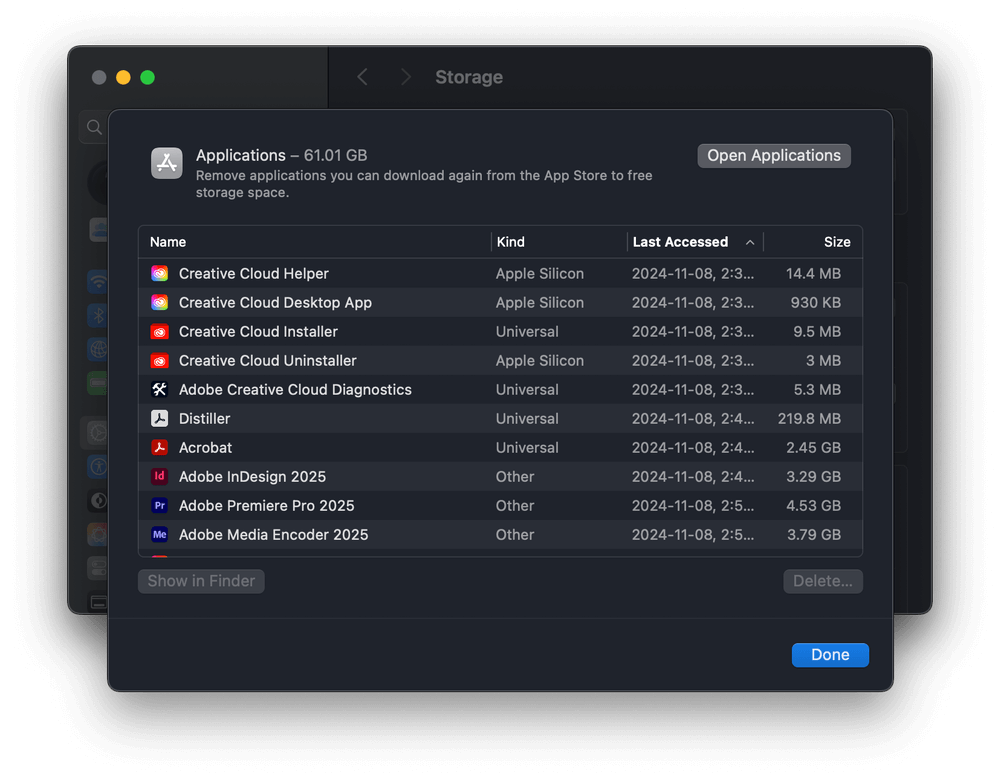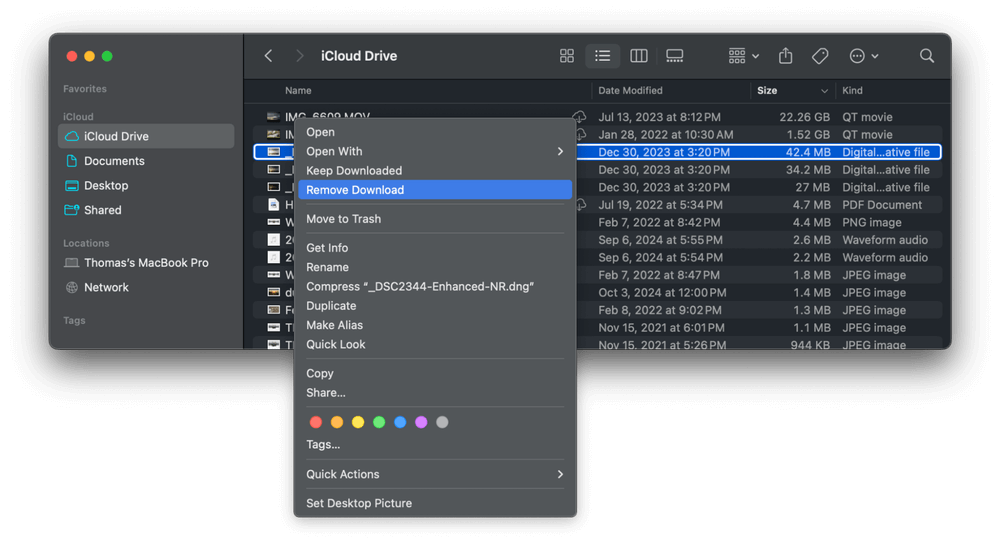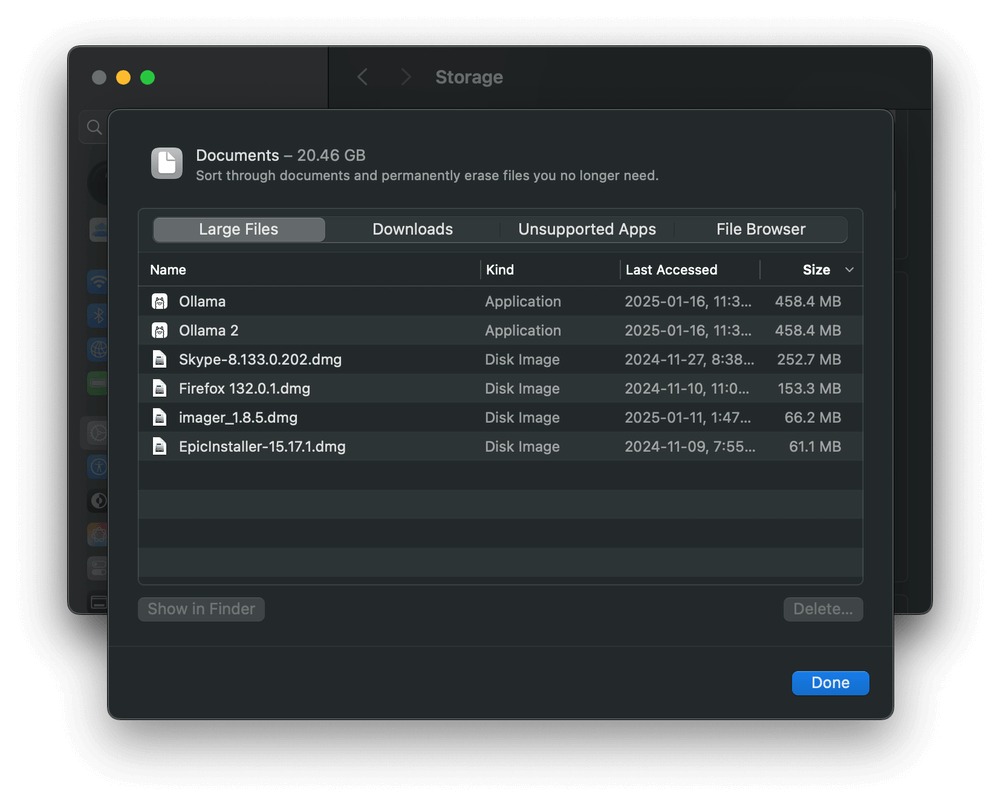How to Free Up Disk Space on MacBook Air
Learn how to clear clutter and free up a lot of disk space on your MacBook Air effortlessly, including bonus tips on how to prevent future storage issues!
Running out of disk space on your MacBook Air? Don’t worry—you don’t need to buy a new device!
Apple has always taken a miserly approach to storage space, especially for its entry-level models. When macOS can use over 50GB of storage space all by itself, that doesn’t leave much room on a 128GB or 256GB system drive to store all your apps and files.
With a little care and attention, you can banish those pesky free space warnings and give yourself more storage room to work with.
In this guide, our iMobie team will show you 9 proven ways to free up disk space on your MacBook Air. You might even get a little performance boost along the way!
Why Does My MacBook Air Have Low Disk Space?
Unfortunately, there are a lot of potential reasons, but the good news is that these issues can be fixed with a few simple steps!
| Cause/Reason | Probability | Impact | Ease/Efforts to Fix |
| Too many large files | 80% | 8/10 | 3/10 |
| Unused apps | 70% | 4/10 | 3/10 |
| Unneeded system data | 60% | 6/10 | 5/10 |
| Photo storage | 60% | 7/10 | 2/10 |
| Old downloads | 60% | 7/10 | 1/10 |
| Unneeded cache files | 50% | 6/10 | 3/10 |
| Duplicate files | 40% | 3/10 | 6/10 |
9 Ways to Free Up Disk Space on MacBook Air
Quick Method: Using CleanMyMac for Efficiency (Recommended)
| Time Needed | Difficulty Level | Impact on Result | Cost |
| 5 minutes | Easy | High | $34.99 USD per year per Mac |
The simplest way to manage your storage space is with CleanMyMac. With a few quick scans, you can identify and remove unused apps, duplicate files, old caches and log files, and even more system junk you don’t need.

CleanMyMac Cleanup feature
Best of all, you get total control over every aspect of your storage cleanup, so there’s no risk of accidentally cleaning out files you want to keep.
macOS allows you to do all the same jobs by hand, but it will take significantly longer. You’ll have to spend even more time and effort understanding how each part of macOS works to ensure you’re clearing data safely, while CleanMyMac already knows how to do all that for you!
Method 1: Use Storage Management
| Time Needed | Difficulty Level | Impact on Result | Cost |
| 10-15 minutes | Easy | Medium | Free |
macOS has a handy built-in tool to help manage your storage, although Apple could make it easier to find.
- Open the Apple menu, click System Settings, and choose the General section.
- Click Storage, and you’ll see a breakdown of the storage space on your Macbook Air, divided into apps, documents, photos, etc.
- Click the small i icon next to each entry for more options to free up disk space.
Method 2: Clear Cache and Temporary Files
| Time Needed | Difficulty Level | Impact on Result | Cost |
| 10 minutes | Medium | Medium | Free |

macOS Storage Overview
Caches speed up app launches and store temporary data, but they can get corrupted and grow too large. In some situations, apps you’ve uninstalled can leave behind large cache files that take up your storage space with no purpose at all.
We’ve prepared an extensive guide that shows you how to clear all of Mac’s cache files, but it requires some care and attention to make sure you don’t delete useful caches.
You can also boot your Mac into Safe Mode using the official Apple instructions to clear additional system caches and temporary files.
If you don’t want to deal with cache files manually, CleanMyMac automates the clearing process with a much simpler approach. CMM is not free software, but it comes with a wide variety of tools for managing your storage space.
Method 3: Delete Unused Apps
| Time Needed | Difficulty Level | Impact on Result | Cost |
| 5 minutes | Easy | High | Free |
The hardest part of this method is deciding which apps you can live without! You can get a quick overview of all the apps installed on your Mac in the Storage section of your System Settings (in case you forgot, it’s Apple menu > System Settings > General > Storage).

macOS Storage installed applications
- Click the small i icon next to Applications to display a list of all your apps.
- Click the Last Accessed column header to sort the apps by date (if necessary, click it a second time to reverse the sorting order).
- Select an unused app and click the Delete button.
Method 4: Manage iCloud Storage
| Time Needed | Difficulty Level | Impact on Result | Cost |
| 5 minutes | Easy | High | Free / iCloud subscription costs |
Apple bundles a free iCloud subscription with all Apple accounts, including at least 5 GB of online storage space in iCloud Drive. Your MacBook Air is directly linked to that storage, and it will download a copy of any iCloud files you access onto your storage drive.
If you no longer need to access those files, you can remove the downloaded copy from your MacBook to free up space while keeping the original safe in online storage.

Mac iCloud Drive Remove Download
- Open a new Finder window and browse to iCloud Drive.
- Choose a file you want to remove, and Option-click or right-click on the filename.
- In the context popup menu, select Remove Download, and you’ll regain all that storage space without losing the original file.
- To select larger files, you can open the View menu in Finder, choose as List to show more details about your files.
- Click the Size column header to sort your iCloud Drive files by size.
Method 5: Clear “System Data” or “Other” Storage
| Time Needed | Difficulty Level | Impact on Result | Cost |
| 5 minutes | Easy | Medium | Free or $34.99 USD per year |
If you look closely in the Storage section of your System Settings, you’ll see a few macOS storage usage entries at the bottom of the list. Other Users & Shared shows how much storage is used for other user accounts on your MacBook, while the System Data tells you how much space is used by caches, temporary files, log files, macOS system apps, and more.

macOS Storage Overview
The simplest way to clear some of your Mac’s System Data space is by running a Cleanup scan in CleanMyMac. Most of the data is necessary for macOS to run, but you’ll still get some space back. The scan only takes a few seconds and may also identify other ways to free up storage space.
Reclaiming space from the Other Users & Shared section could be more challenging if the other people who share your MacBook are reluctant to delete their files.
If the account is no longer in use and you have administrator privileges, you can delete the user account and all its data from the Users & Groups section in System Settings.
Method 6: Delete Large Files and Downloads
| Time Needed | Difficulty Level | Impact on Result | Cost |
| 5-10 minutes | Easy | High | Free |
The built-in storage management tools in macOS can also help you identify and delete old downloads and large files you may not need anymore.
- Open System Settings, switch to the General section, and then click Storage.
- Click the small i icon next to the Documents entry, and it will display a handy list of all your large files.
- Select an item and click the Delete button.

Mac Find and Delete Large Old Files
Switch to the Downloads section and repeat the process until you’ve regained enough space.
Method 7: Optimize Photos and Media
| Time Needed | Difficulty Level | Impact on Result | Cost |
| 5 minutes | Easy | High | Free / iCloud subscription costs |
Photos and other media can take up a massive amount of storage space on your drive, especially if the Photos app syncs your entire high-res collection to your MacBook Air.
To optimize your photo collection, follow these steps:
- Launch the Photos app.
- Open Settings from the app menu.
- In the Settings window, switch to the iCloud tab and select Optimize Mac Storage.

macOS iCloud Photos
You won’t lose your high-res photos, but you’ll regain some storage space.
If you want to keep your high-res photos stored on your MacBook, you can reduce the size of your collection using the duplicate photo finder feature in the Photos app. Launch the Photos app, open the Utilities section in the sidebar, and select Duplicates.
Method 8: Find and Remove Duplicate Files
| Time Needed | Difficulty Level | Impact on Result | Cost |
| 5-10 minutes | Easy | High | Free / $34.99 USD per year |
There are plenty of ways to find and delete duplicate files on a Mac. However, the quick version is that third-party tools are the simplest way to get the job done.

CleanMyMac Duplicates Finder feature
CleanMyMac has a lot of useful features for reclaiming storage space, including a duplicate file finder. Additionally, if you have a large photo collection, it can also identify similar (but not exactly identical) photos in your collection that are missed by the Photos app’s built-in duplicate finder tool.
How to Prevent Future Storage Issues on MacBook Air
Here are a few other tips that can prevent storage issues from ruining your MacBook Air experience:
- Create a file management routine. Get in the habit of regularly reviewing the three ‘D’ folders, Desktop, Downloads, and Documents, to make sure you’re not keeping files you don’t need! Try setting a weekly or monthly reminder using the Reminders app.
- Store files with iCloud. Store your essential files in iCloud so they don’t take up local storage space unless you need to use them.
- Upgrade your iCloud storage space. If you want to maximize your iCloud usage, the largest plan offers a whopping 2 TB of storage space for $9.99 USD per month, which should help you reclaim as much storage space as you need.
Final Words
By following these tips, you can free up disk space on your MacBook Air and keep it running smoothly. We can hope that Apple will change its policies on storage space pricing in the future, but until that happens, it’s a good idea to buy a slightly larger storage drive than you expect to use.
If you don’t want to pay Apple’s storage premium, consider buying a third-party external drive to expand your local storage options.
Product-related questions? Contact Our Support Team to Get Quick Solution >
